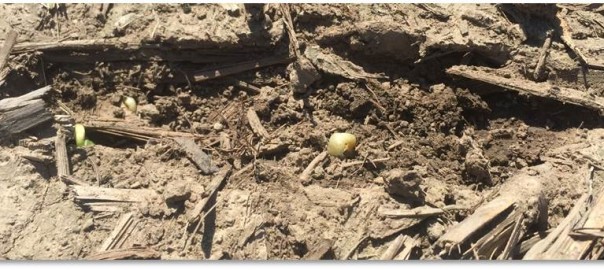Corn, soybeans, cotton, and wheat were up for the week. Prices continued to move upward this week with corn leading the way. In Tennessee, harvest cash forward contracts, at the end of the week averaged $4.00 and $10.42, for corn and soybeans, respectively. These prices are substantially higher than many predictions by analysts this winter. So what has precipitated this reversal in price direction and price expectation? Continue reading at Tennessee Market Highlights.
Recent Updates
UT Crop Market Update 5/26/2016
Corn: September corn futures closed at their highest levels so far this year. It is hard to believe that $4.00 is finally here. After all, it was not that long ago that this price level seemed unobtainable. The combination of a few factors such as higher soybean prices, increased involvement of fund trading, and a weaker dollar have contributed to higher prices. Continue reading
How Extensive is PPO/Glyphosate-Resistant Palmer Amaranth in Tennessee?
We will learn a lot over the next couple of weeks on the extent of the glyphosate and PPO resistant Palmer amaranth. In an effort to get an early estimate of where we are at, we randomly collected Palmer amaranth from fields in Shelby, Hardeman, Tipton, Madison, Weakley, Obion, Gibson, Carroll, Lake and Dyer counties. We sent these samples to Dr. Bryan Young at Purdue University to determine if they had the PPO resistant gene. Continue reading
Reminder – Cotton Scout School this Friday (May 27)
The UT Cotton Scout School will be held on Friday, May 27th in Room A at the West Tennessee Research and Education Center (605 Airways Blvd, Jackson). Registration will begin at 8:00 AM with the official program starting at 8:30. The program will end with a lunch, but those interested can attend a short ‘go to the field’ session after lunch. Topics will include crop development, insect and weed identification, scouting techniques, and more. No registration fee or preregistration is required.
Comment Period on Proposed Dicamba label for Roundup Xtend Crops is Ending
The end of the EPA open comment period for registration of dicamba (specifically the product M1691) on Roundup Xtend cotton and soybean is May 31st. I just checked and there is well over 4000 comments to date. I opened a few and many are favorable and there are a good number that are not. I know we are in the middle of planting but it might be good to let your opinion be heard as well. Continue reading
Crop Progress – NASS Tennessee
COOLER TEMPERATURES CAUSE CONCERNS
While a cold front brought some much-needed rain to parts of Tennessee, the cooler temperatures associated with it caused concern for their emerging crops among row crop farmers. Cotton especially needed warmer temperatures. Livestock producers were busy with hay harvest until the rain. Cattle and pastures were still in good shape. There were 4.7 days suitable for field work. Continue reading at TN_05_23_16.
Crop Progress – NASS U.S.
The USDA Crop Progress report released May 23, 2016 can be read at CropProg-05-23-2016.


